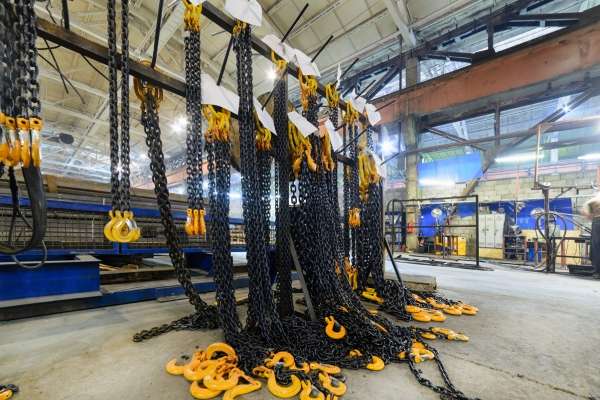100 %

Oct 5,2023
Chain slings are indispensable in various industries, offering durability and strength for lifting and rigging tasks. However, their safe and effective use requires more than just basic knowledge. In this article, we'll explore the key aspects you need to consider to ensure the longevity and safety of your chain slings. From selecting the right sling to avoiding common mistakes, let's dive into the essential tips that will help you make the most out of your equipment.
Overloading is one of the most common mistakes made when using chain slings. Knowing the safe working load (SWL) and safety factor for your specific sling is essential. These values are calculated based on factors like the type of sling, configuration, and the lift angle.
Distributing the load evenly across sling points is equally important. Imbalanced loads can stress specific sling parts, leading to premature wear and potential failure. Always take the time to calculate and plan your lifts to avoid overloading and imbalanced loads.
Regular inspections are crucial to maintaining your chain slings' safety and longevity. Establish a routine inspection schedule and conduct visual checks for signs of wear, deformation, or damage. Look for any indications that the sling may be compromised, such as bent links or worn-out components.
In addition to visual inspections, consider implementing non-destructive testing (NDT) methods. These techniques can reveal hidden defects that may not be apparent during a visual inspection. NDT methods, such as magnetic particle testing or ultrasonic testing, can provide valuable insights into the integrity of your chain slings.
Proper attachments and rigging techniques are essential for chain slings' safe and effective use. Ensure the hooks, links, and connectors are compatible with the sling and load. Using incorrect attachments can lead to stress concentration points and potential failure.
Additionally, pay close attention to how the sling is attached to the load. Improper techniques like twisting or kinking can weaken the sling and reduce its lifespan. Always follow recommended rigging practices to maintain the integrity of your chain slings.
Chain slings are exposed to various environmental conditions, including moisture, chemicals, and extreme temperatures. These factors can accelerate wear and corrosion, compromising the integrity of the sling. To mitigate these risks, implement proper storage and handling practices.
Consider using protective coatings or materials to shield the sling from corrosive agents. Regularly clean and inspect the sling for signs of corrosion, and take proactive measures to address any issues promptly. By protecting against environmental factors, you can significantly extend the lifespan of your chain slings.
By following these essential tips, you can ensure the safety and longevity of your chain slings. From selecting the right sling to avoiding common mistakes, each step plays a crucial role in maintaining the integrity of your equipment. Remember, a well-maintained chain sling not only enhances safety but also contributes to the efficiency and productivity of your operations. Prioritize safety, invest in proper training, and implement best practices to make the most out of your chain slings.